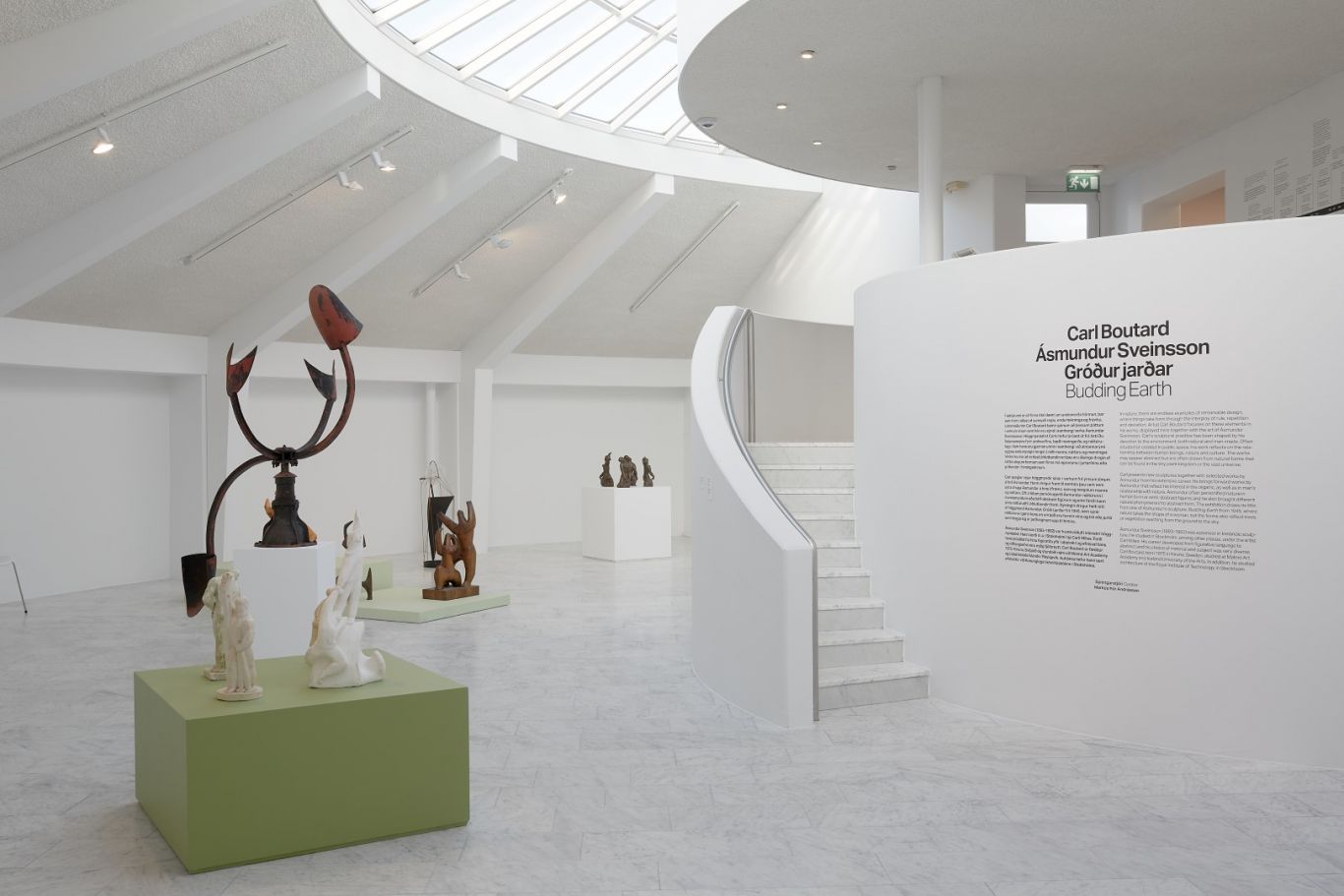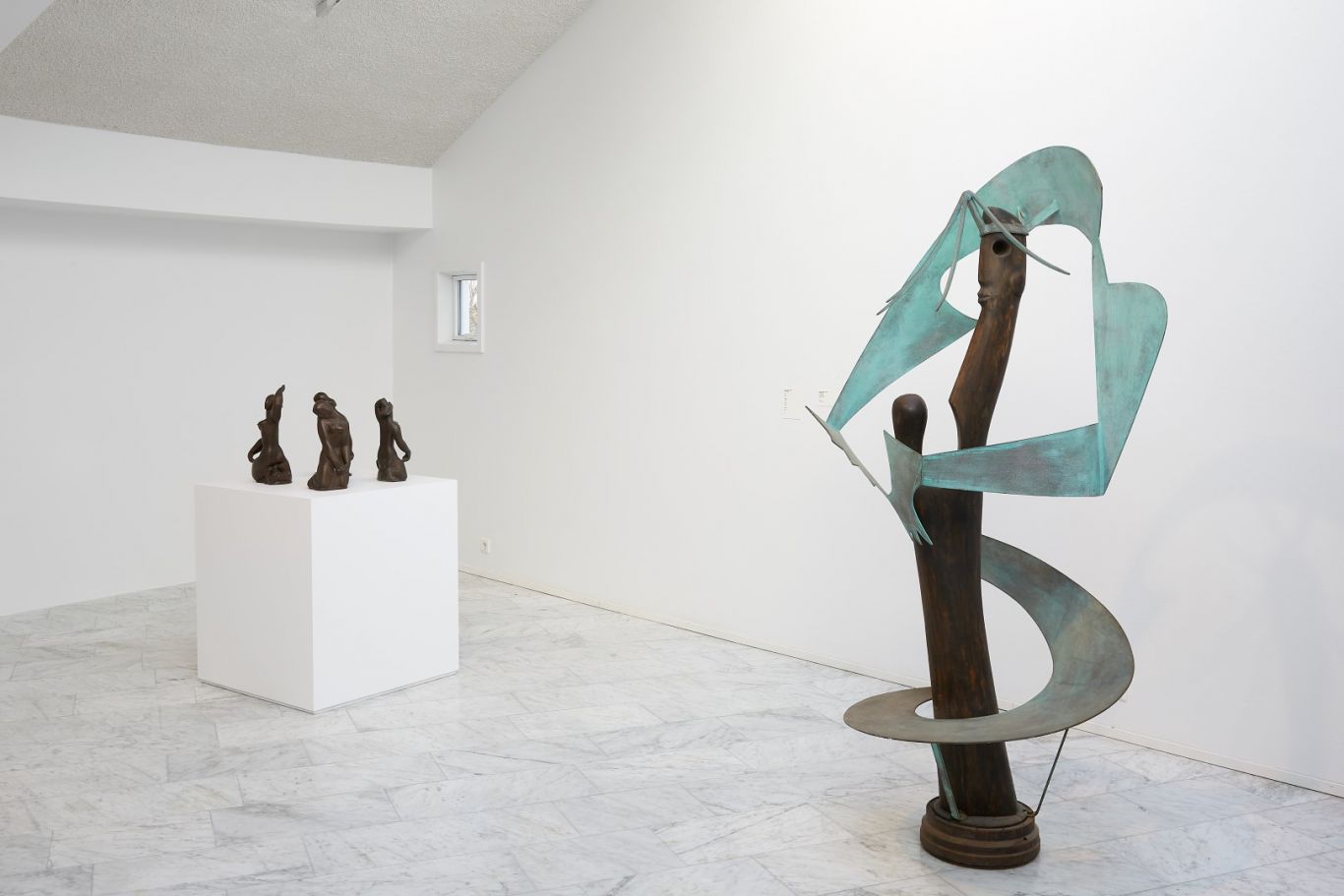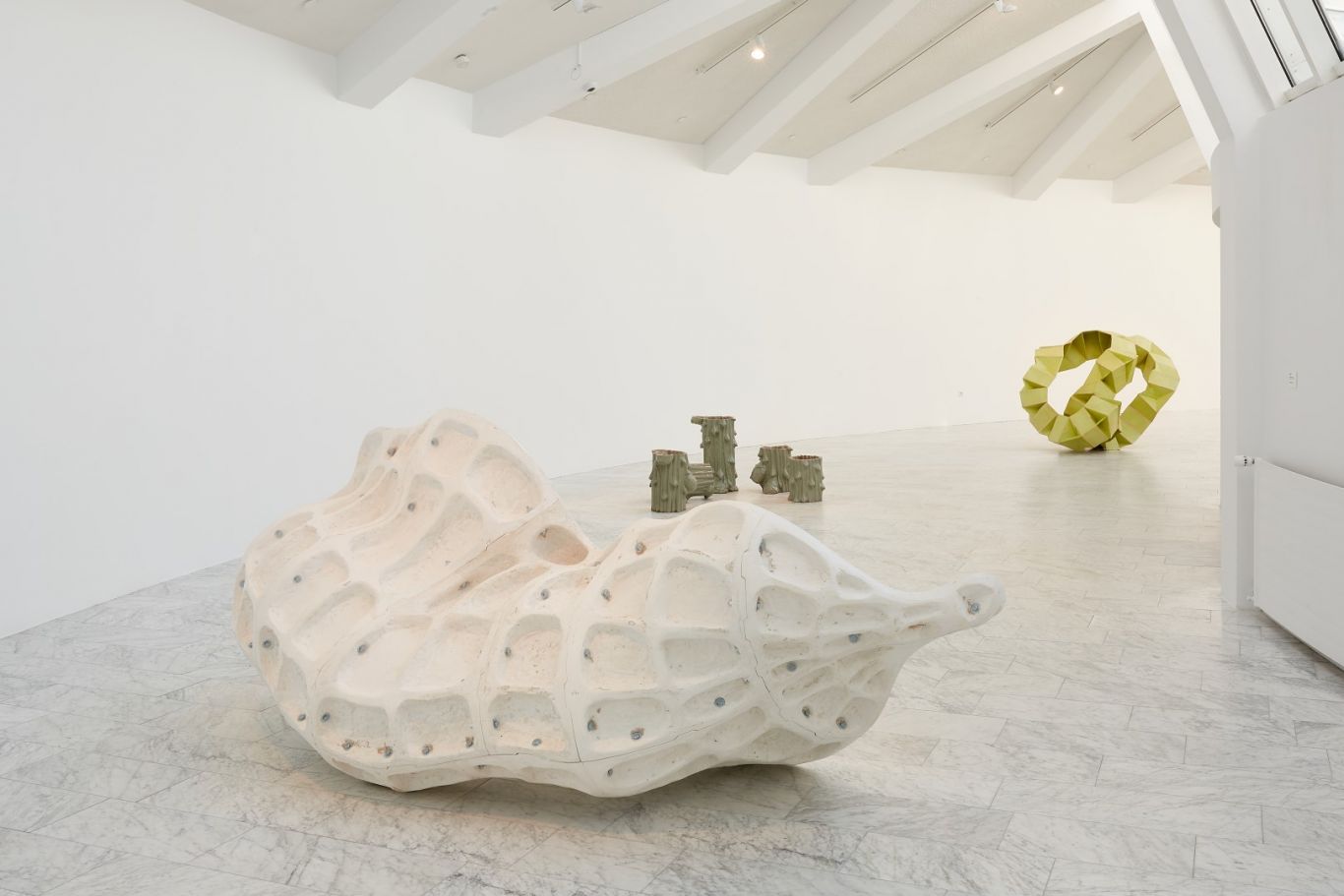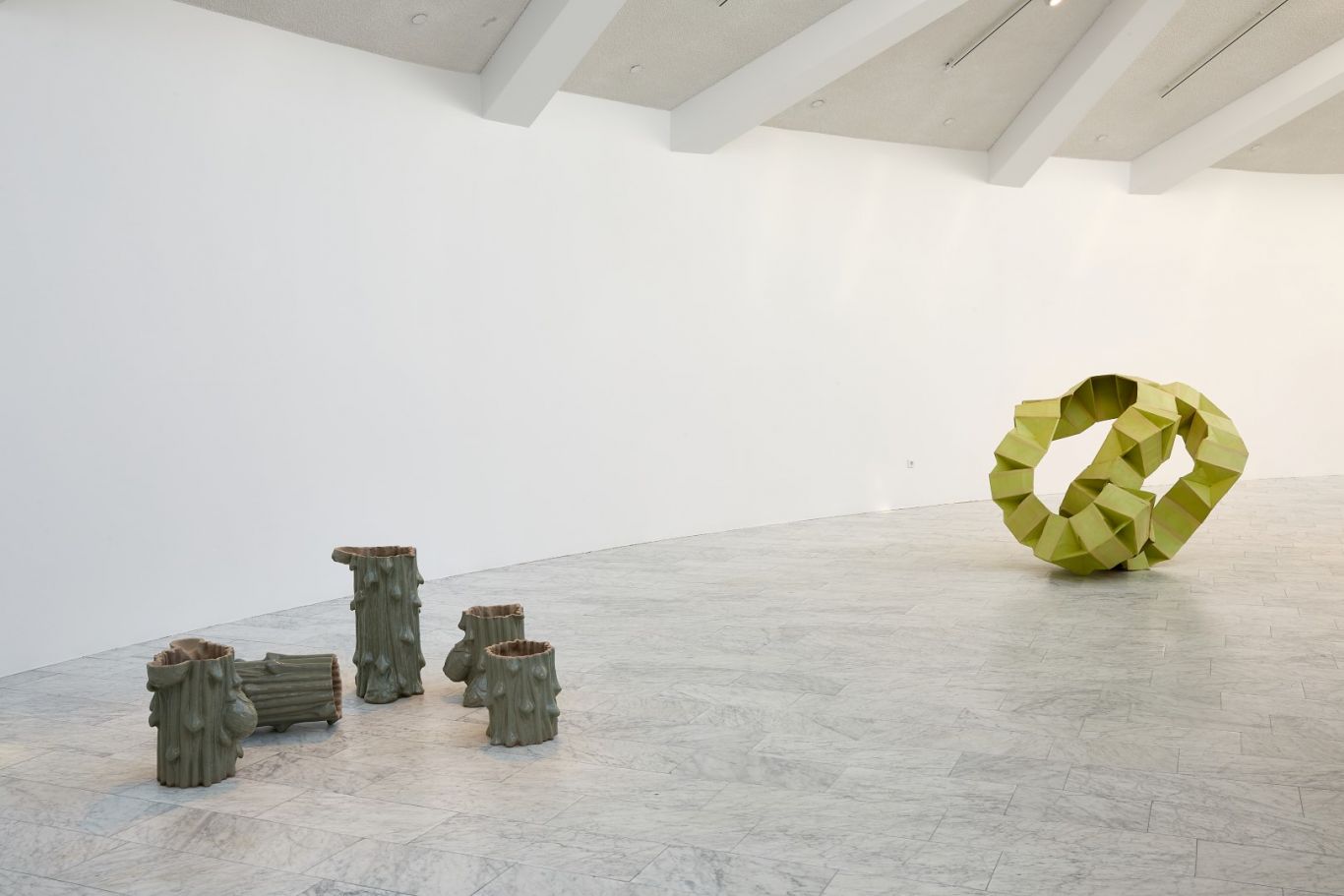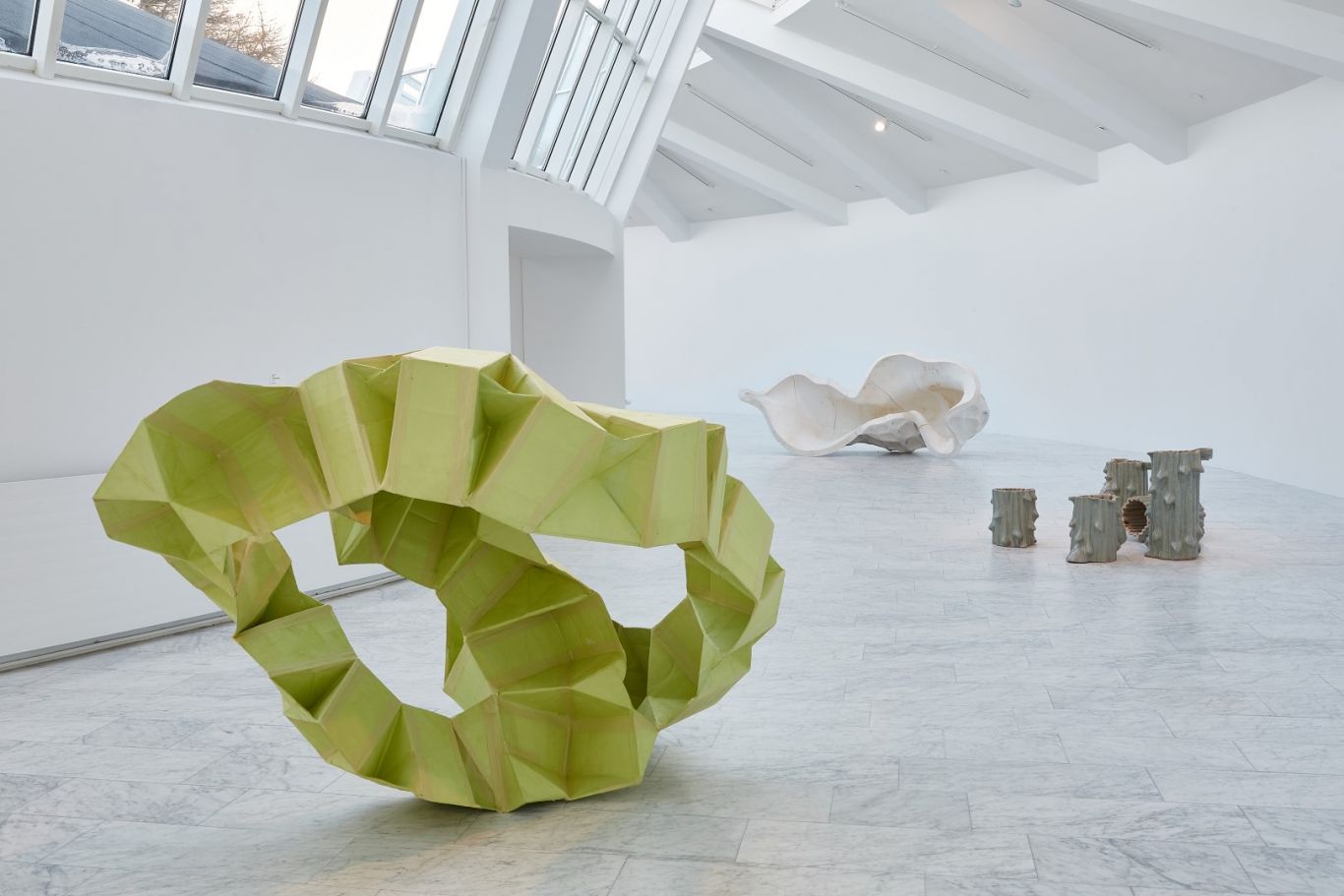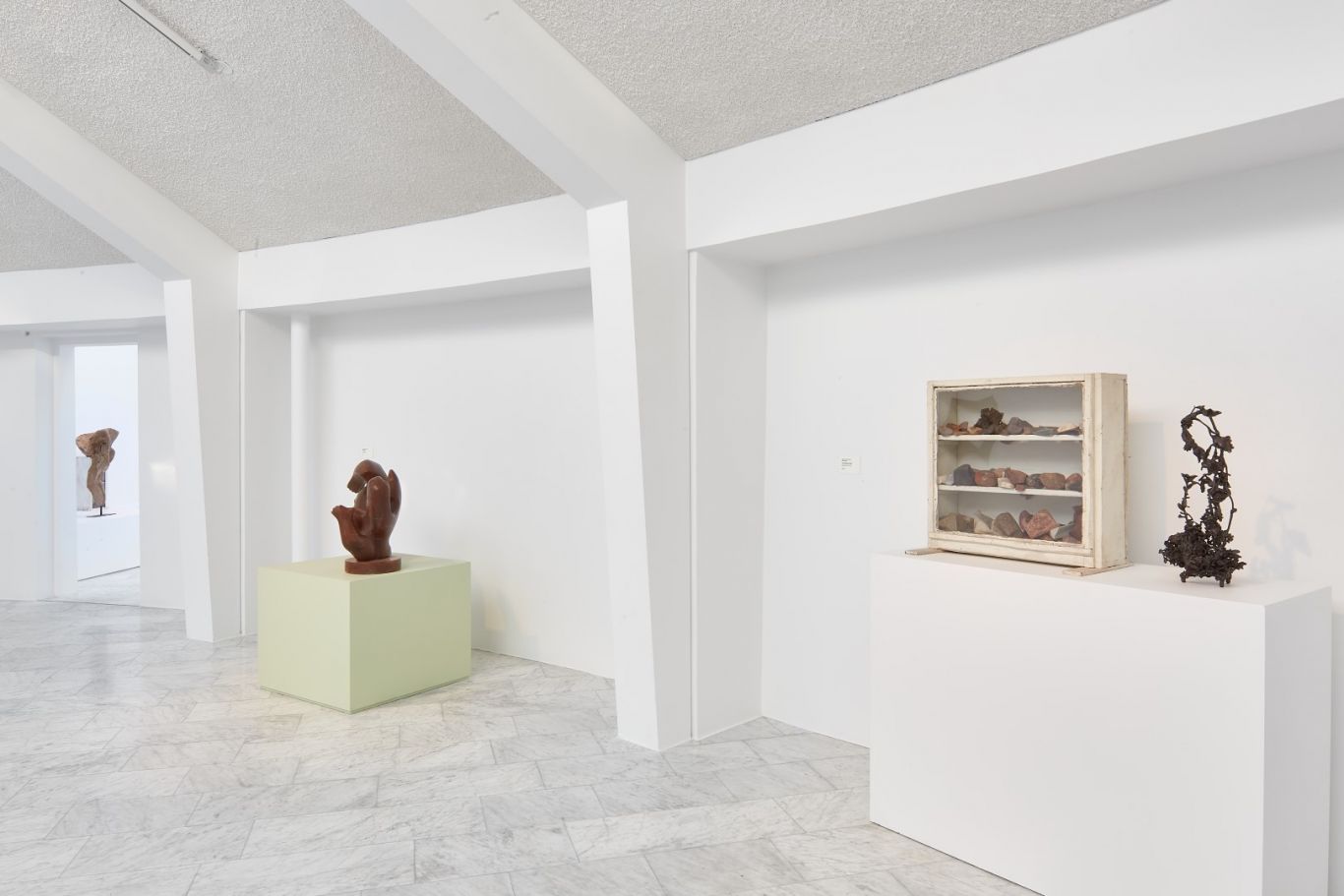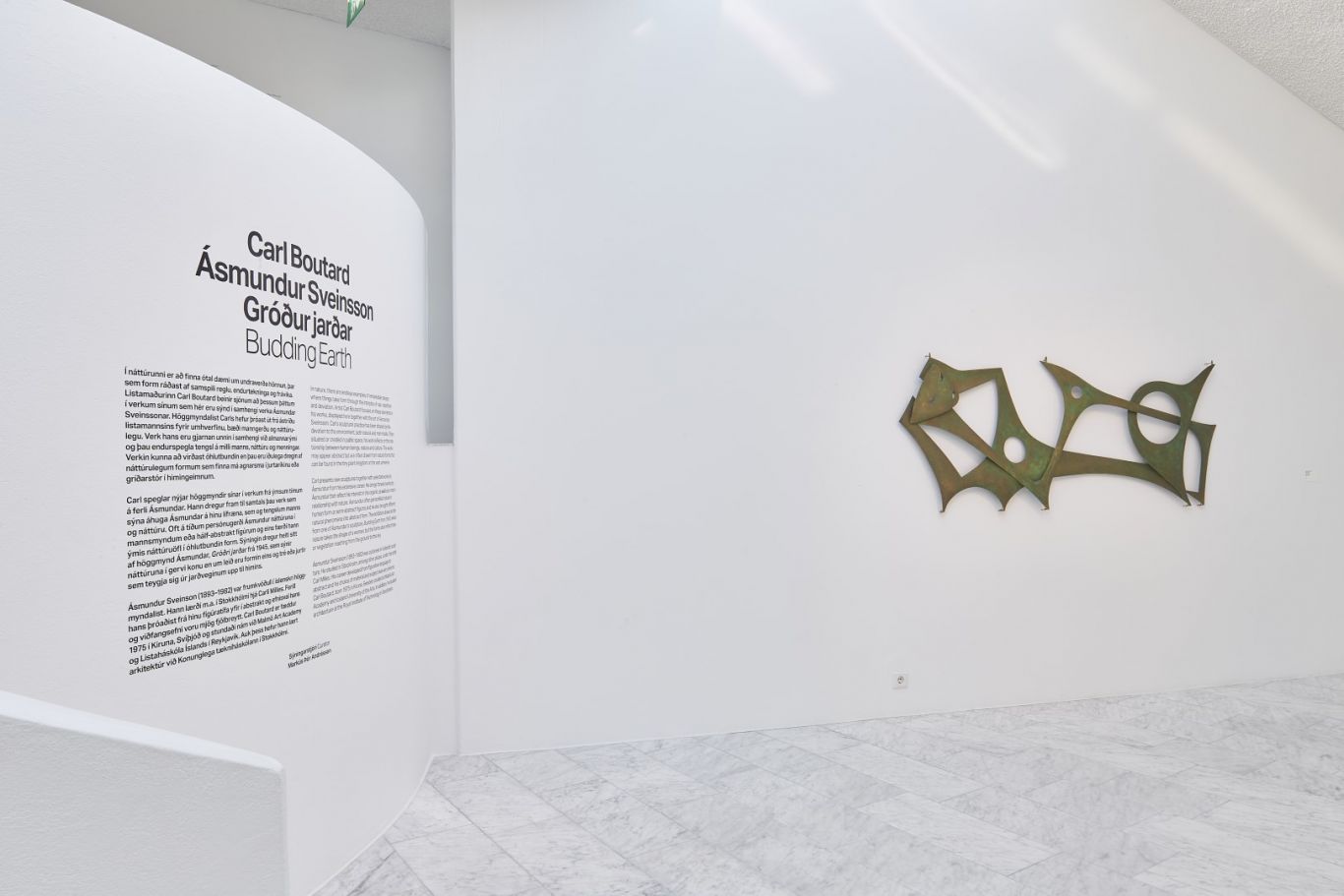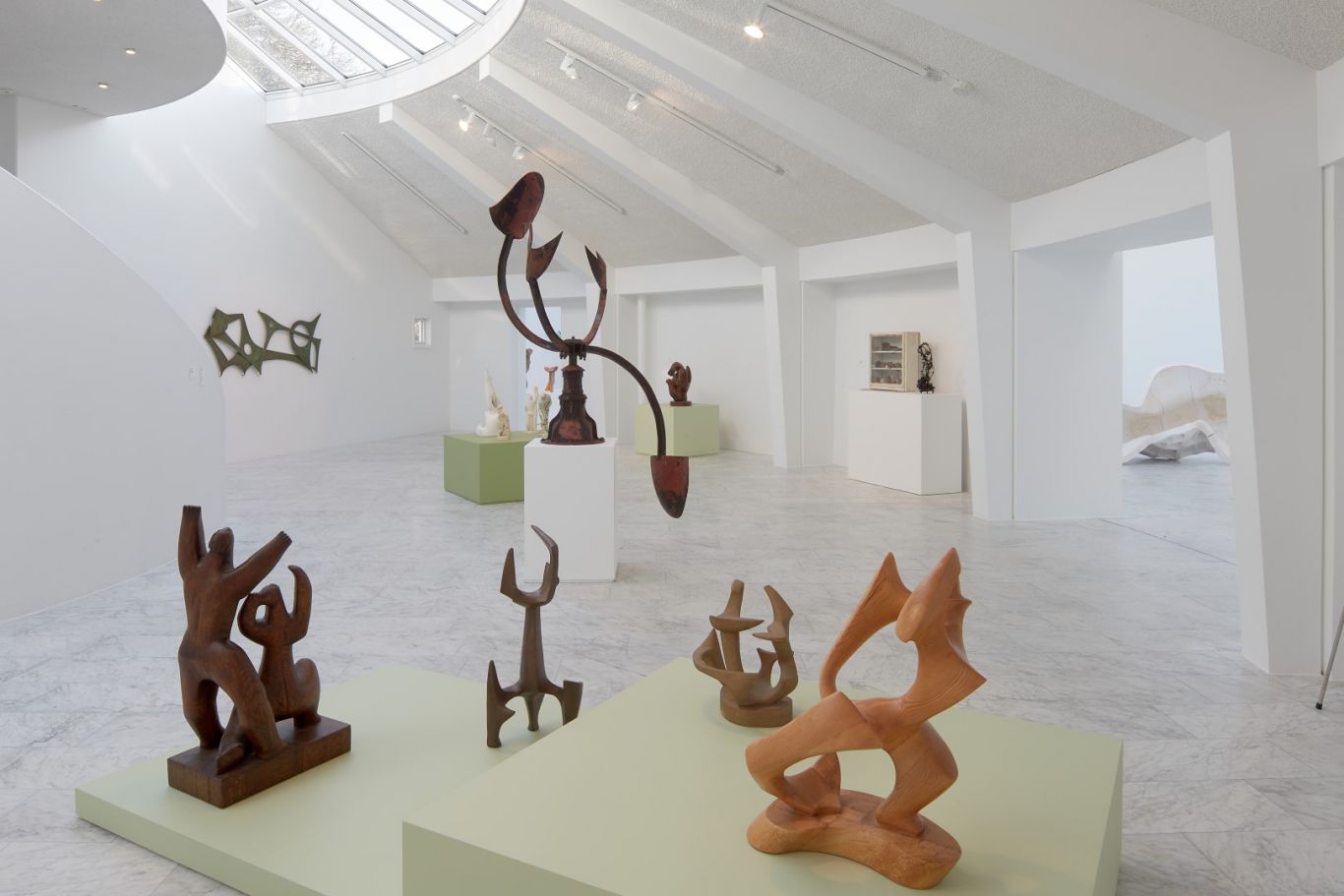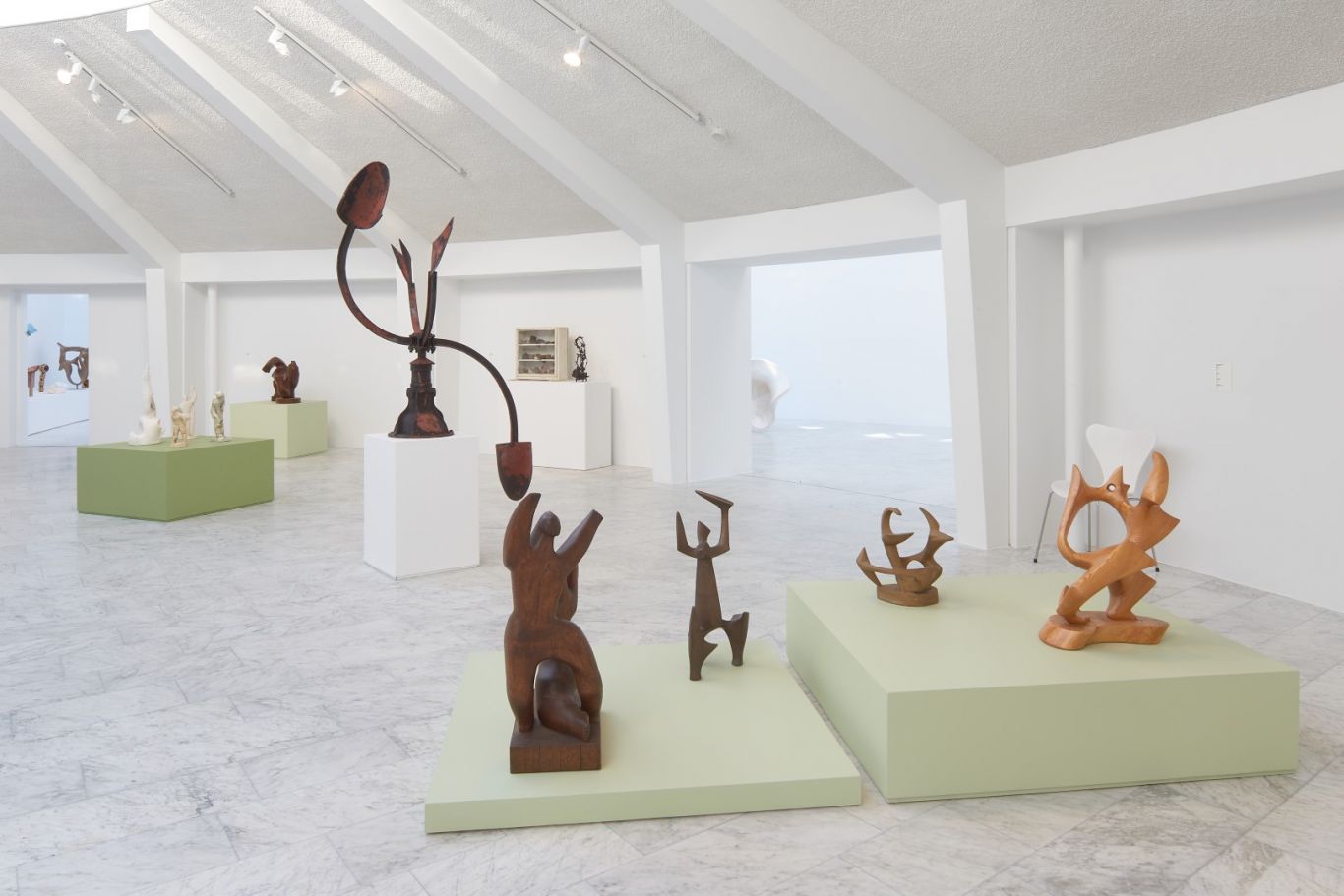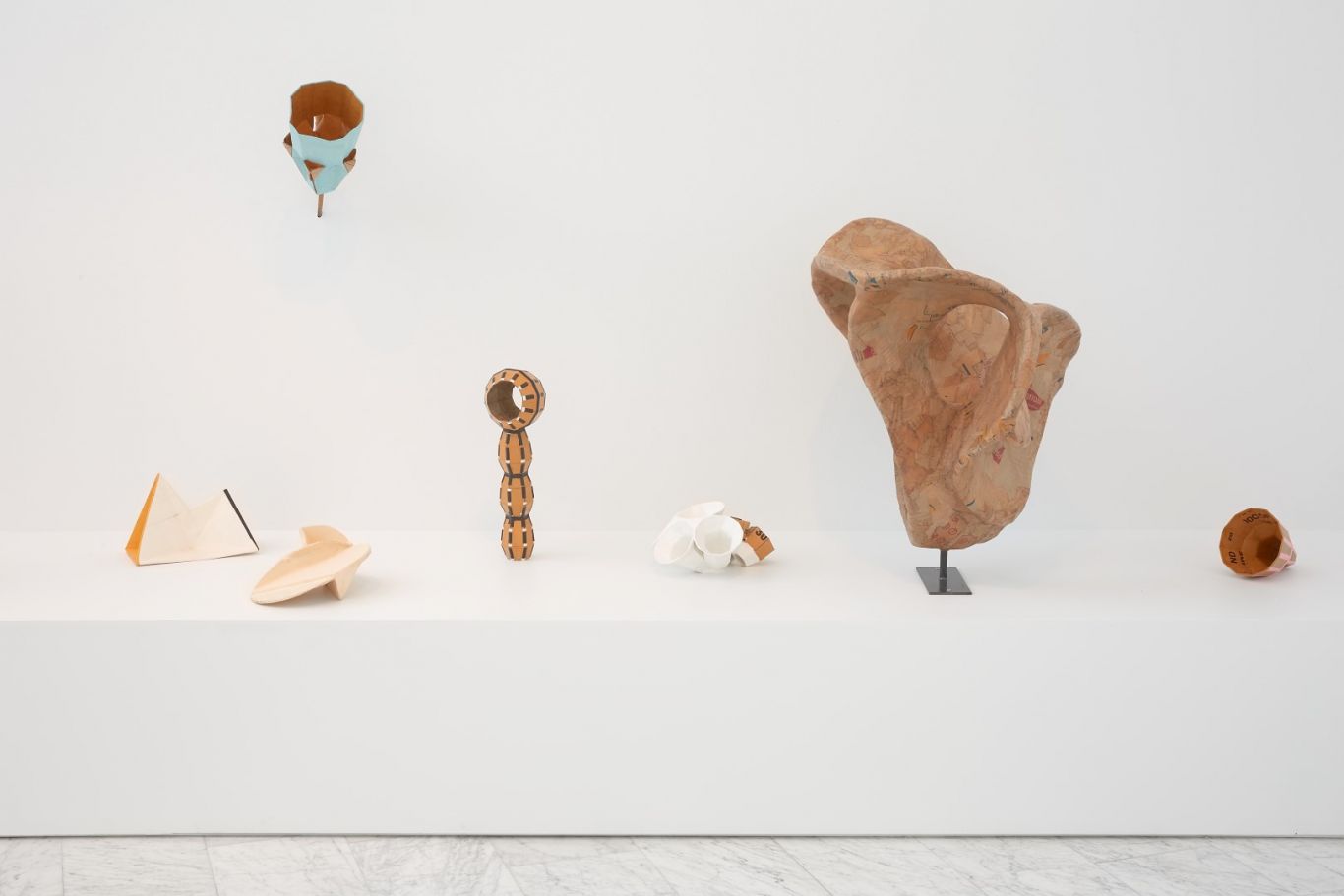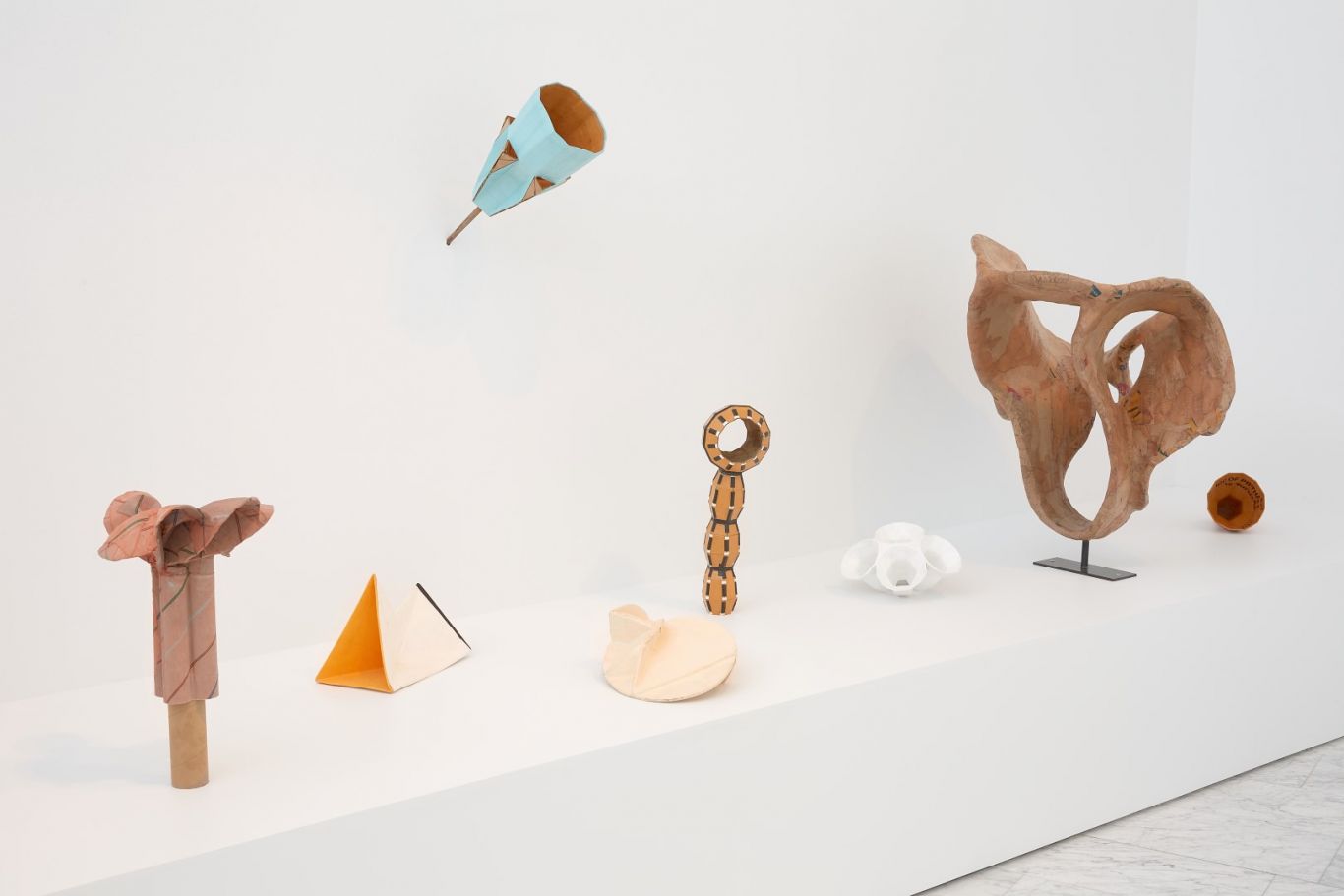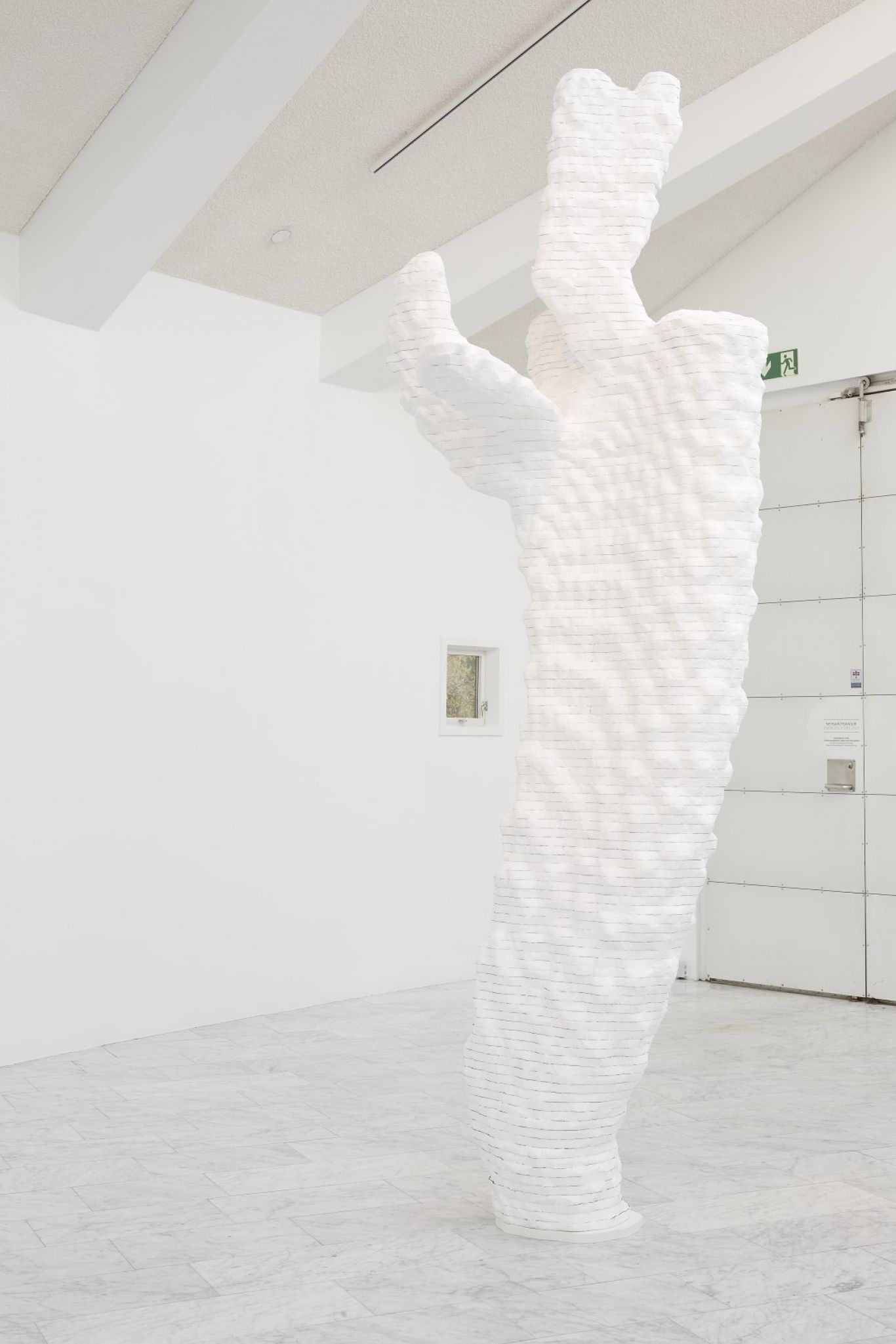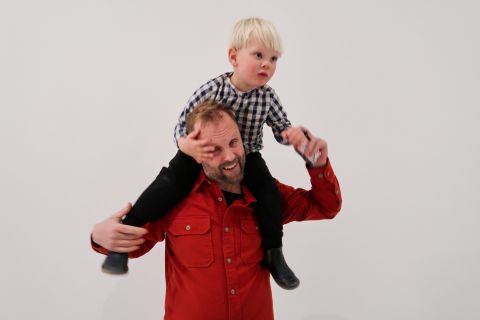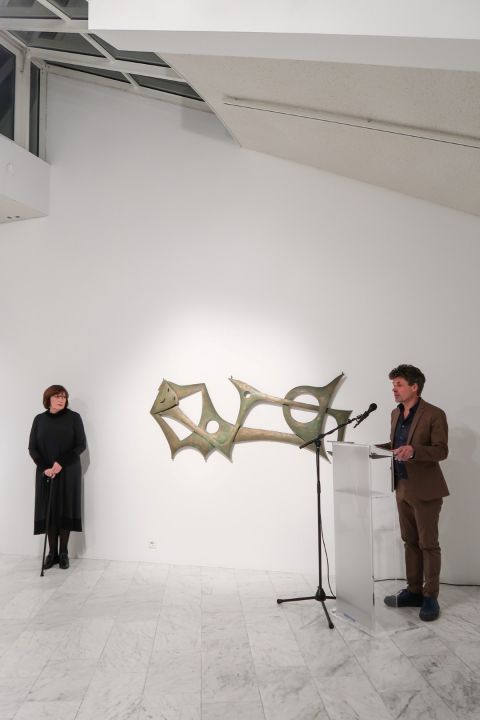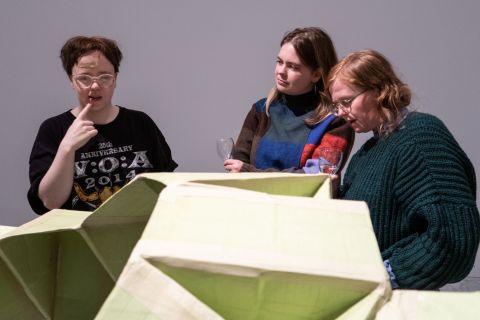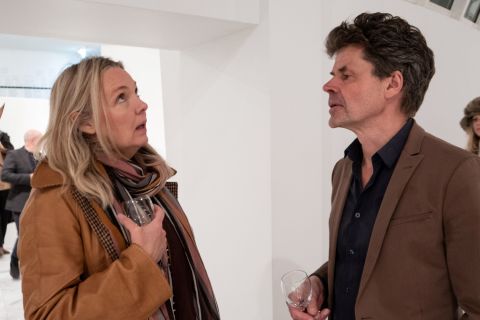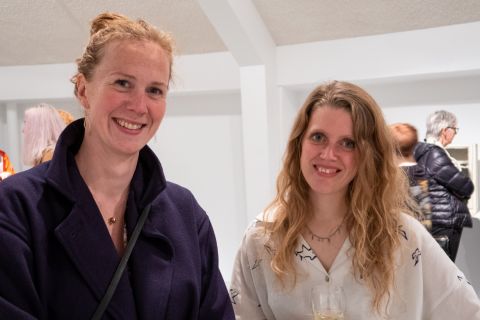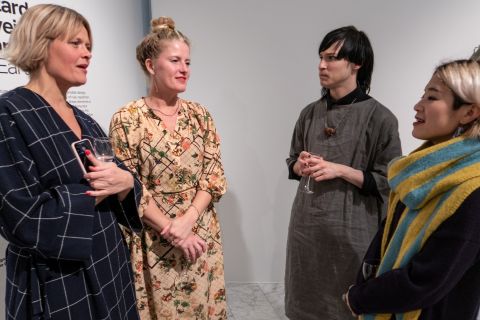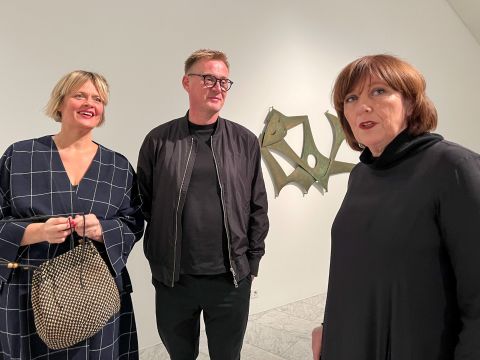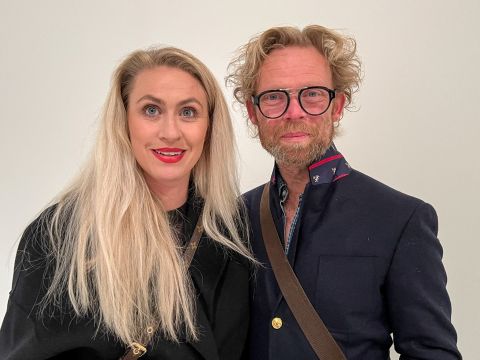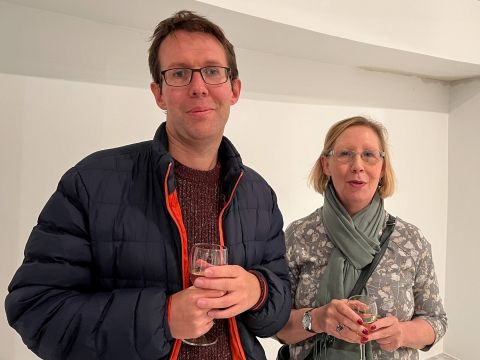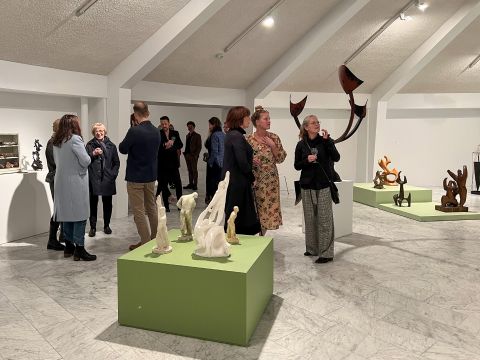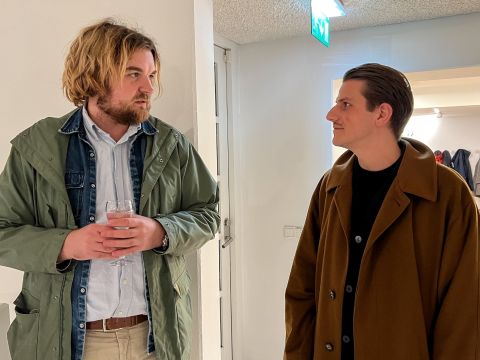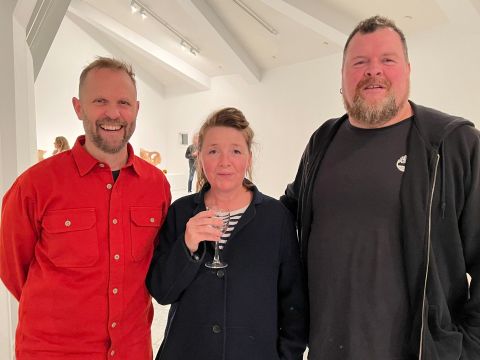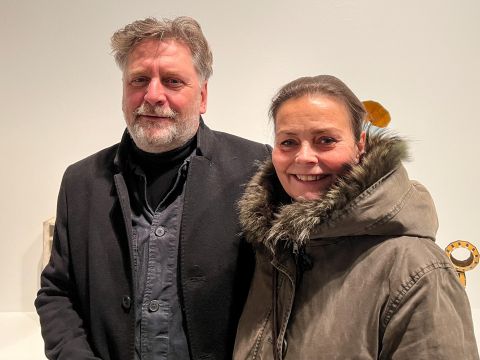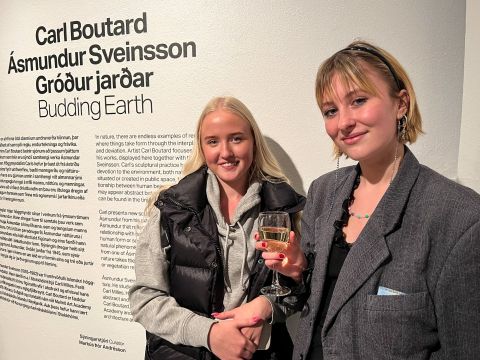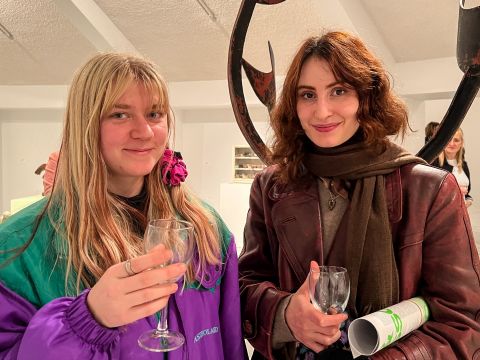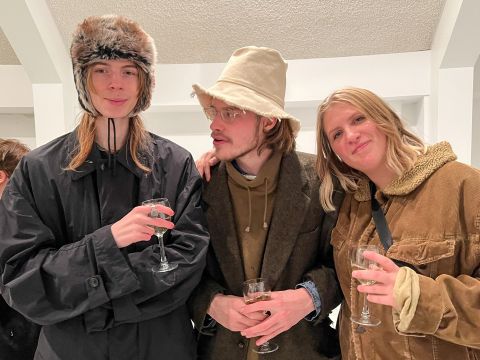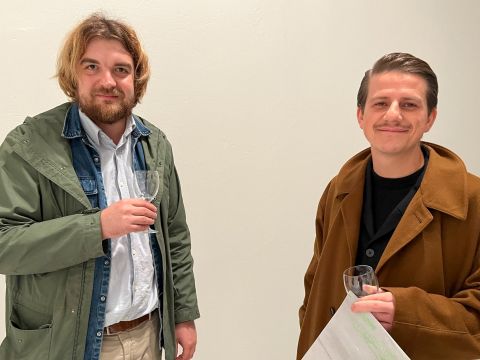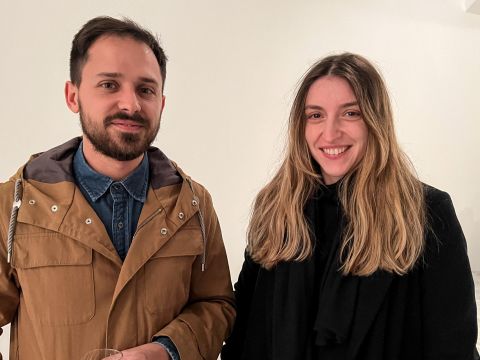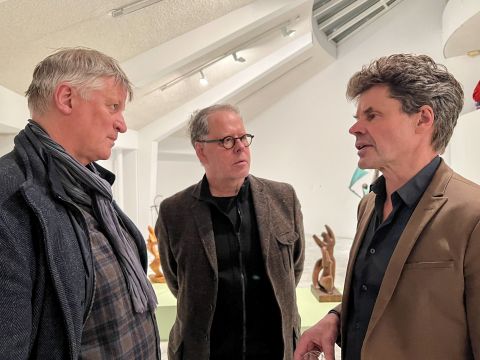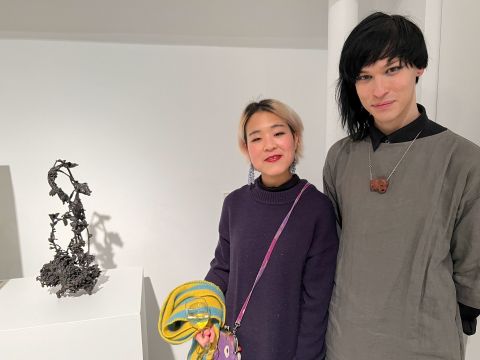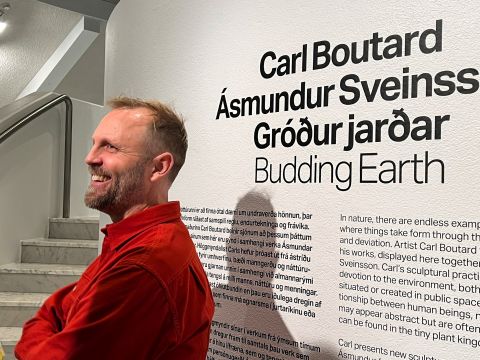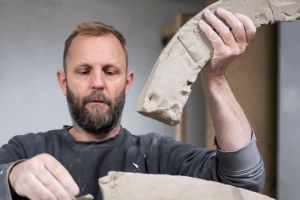Choose year
Carl Boutard and Ásmundur Sveinsson: Budding Earth
In nature there are endless examples of remarkable design, where things take form through the interplay of rule, repetition and deviation. Artist Carl Boutard focuses on these elements in his and Ásmundur Sveinsson‘s exhibition. Carl’s sculptural practice has been shaped by his devotion to the environment, both natural and man-made. Often situated or created in public space, his work reflects on the relationship between human beings, nature and culture. Carl describes himself as a “traditional sculptor” referring to his emphasis on material and form, and the function of the works to change depending on the point of view from which they are viewed. The works may appear abstract, but are often drawn from natural forms that can be found in the tiny plant kingdom or in the vast universe.
Much of Carl Boutard’s art practice has a counterpart in the lifework of Ásmundur Sveinsson. It is exciting to see the work of these sculptors from different times juxtaposed together. Visitors gain new perspective on the heritage of the well-known and cared for artist through a contemporary lens – within the beautiful environment of Ásmundarsafn and the surrounding garden. Carl presents new sculptures together with selected works by Ásmundur from his extensive career. He brings forward works by Ásmundur that reflect his interest in man’s relationship with nature. Ásmundur often personified nature in human form or semi-abstract figures and he also brought different natural phenomena into abstract form. The exhibition draws its title from a wooden sculpture, Budding Earth from 1945, where nature takes the shape of a woman, but the forms also reflect trees or vegetation reaching form the ground to the sky.
Ásmundur Sveinson (1893-1982) was a pioneer in Icelandic art. He studied classical sculpture and worked in traditional subjects at the beginning. His subjects were related to the local environment, nature, working classes, legends and sagas. In the sixties he deviated from the figurative methods that previously characterized his artistic creation and increasingly began to use abstract imagery. His subjects became more intangible and connected to natural phenomena, laws and physics. Unconventional material became prominent in his works and often overtook the outcome of individual works; at the same time, he adopted freer methods by working directly with the material. Ásmundur built his studio and home, the Dome, in several stages during the years 1942-59.
Carl Boutard, born 1975 in Kiruna, has studied at Malmö Art Academy and Iceland University of the Arts, Reykjavik. In addition, he has studied architecture at the Royal Institute of Technology in Stockholm. Boutard’s work has been shown at Malmö Art Museum, Lunds Konsthall, Sven-Harrys konstmuseum, Artipelag, Bonniers Konsthall and Centre Culturel Suédois in Paris. Boutard was awarded the ISCP-scholarship in New York in 2015 and his public commissions include sites in Stockholm, Uppsala, Karlstad, Lund and Heidenheim, Germany. He is represented in the collections at Malmö Art Museum, Public Art Agency Sweden and Skissernas Museum – Museum of Artistic Process and Public Art in Lund. Carl is Assistant Professor at the Department of Fine Art at Iceland University of the Arts.







Click on the pictures to view some more on Instagram and post your own by using the #hashtag of the exhibition.
Remember to follow Reykjavík Art Museum on @reykjavikartmuseum.
